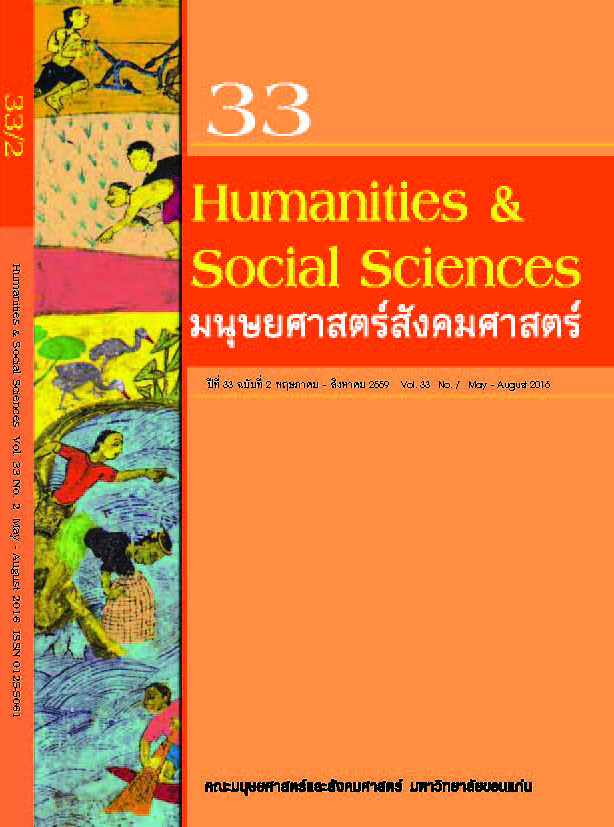คำถวายพระพร:ภาษากับภาพสะท้อนสังคมไทย
Keywords:
คำถวายพระพร, ภาษาAbstract
บทคัดย่อ
บทความนี้มีวัตถุประสงค์เพื่อวิเคราะห์คำถวายพระพรเนื่องในวโรกาสที่พระบาทสมเด็จพระเจ้าอยู่หัวทรงครองสิริราชสมบัติครบ 60 ปี จากการวิเคราะห์คำถวายพระพร ผลการศึกษากลวิธีทางภาษาในการถวายพระพรพบการใช้ภาษาทั้งร้อยแก้วและร้อยกรอง การใช้คำราชาศัพท์และการใช้คำสามัญโดยสามารถแบ่งระดับการใช้ภาษาในการถวายพระพรได้สามระดับคือ ระดับทางการ ระดับกึ่งทางการ และระดับภาษาปาก กลวิธีทางภาษาสะท้อนให้เห็นว่าประชาชนชาวไทยมีความใกล้ชิดและมีความผูกพันกับพระองค์ดุจคำอวยพรที่ลูกมีต่อพ่อ ทั้งนี้คนไทยมีความใกล้ชิดและมีความผูกพันกับพระบาทสมเด็จพระเจ้าอยู่หัวจากการที่พระองค์ทรงงานและการเข้าถึงประชาชนตามโครงการต่างๆ มากกว่าสามพันโครงการตลอด จากสภาพปัญหาต่างๆในสังคมไทยจึงส่งผลให้คำถวายพระพรมีเนื้อหาถึงการห่วงพระทัยของพระบาทสมเด็จพระเจ้าอยู่หัวและการตั้งปณิธานทำความดีและดำเนินตามรอยเบื้องพระยุคลบาทเพื่อให้พระองค์สำราญพระราชหฤทัย
คำสำคัญ: คำถวายพระพร; ภาษา
Abstract
Drawing on Stylistics, this paper aims at analyzing the wishing messages on the 60th Anniversary of His Majesty's Accession to the Throne. Various types of linguistic features have been found: the use of both prose and poetic styles of language, and the use of royal words and common words. Three levels of language have been discovered in the wishing messages: formal, semi-formal, and informal. These linguistic features reflect the close relationship between His Majesty and the Thai people like father and his children due to His Majesty's initiation of more than three thousand development projects for the well-being of Thai people throughout his reign. Given all the current problems in Thai society, the wishing messages reflect Thai people's concern for His majesty's feeling, and Thai's people's determination to do good deeds and to follow his Majesty's way for the pleasure and happiness of His Majesty.
Keywords: Wishing Messages; Language


